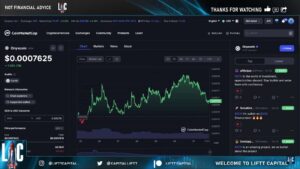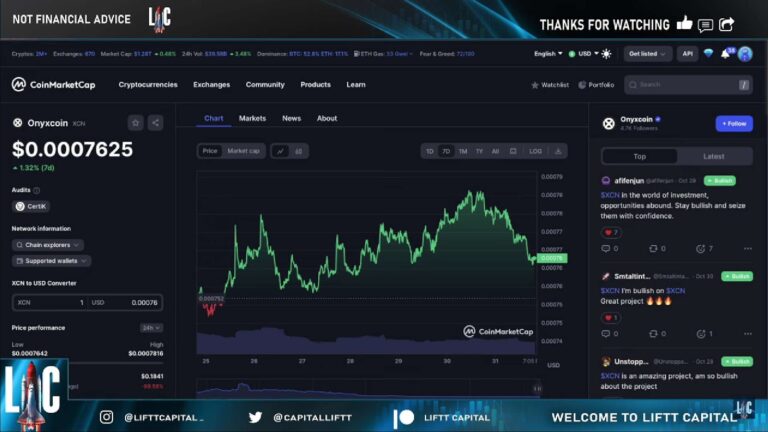In the fast-paced world of finance and investment, few concepts are as fundamental and widely recognized as “stock.” Whether you’re a seasoned investor, a budding entrepreneur seeking funding, or simply curious about how the financial markets operate, understanding what stock represents is a crucial first step. Stocks play a central role in the global economy, shaping the fortunes of individuals, companies, and entire nations.
But what exactly is stock, and why does it hold such significance in the world of finance? In this article, we will unravel the mystery behind stocks, exploring their origins, functions, and the impact they have on both the corporate landscape and the lives of everyday investors. From the bustling trading floors of Wall Street to the digital platforms of online brokerages, we will embark on a journey to demystify the concept of stock and shed light on its pivotal role in the modern financial ecosystem. So, whether you’re looking to expand your investment portfolio or simply enhance your financial literacy, let’s dive into the captivating world of stock ownership.
Unveiling the Enigma: What are Stocks?
Delving into the captivating realm of finance, the term ‘stocks’ emerges as a fundamental and intriguing financial instrument. Often regarded as the lifeblood of countless businesses worldwide, stocks hold the power to transform both the corporate landscape and individual financial prospects. To truly grasp their significance, it’s imperative to embark on a journey of understanding, unraveling the core essence of stocks, and deciphering how they drive the global economy.
Stocks: Supporting Global Economies and Individual Prospects
Traditionally, stocks are akin to the lifeblood of enterprises spanning the globe. They serve as a formidable pathway for businesses to amass the critical capital required for expansion, innovation, and embarking on ambitious projects. Simultaneously, they present individuals with an enticing opportunity to invest their hard-earned finances, potentially paving the way for significant returns over time.
Here’s a comprehensive look at the world of stocks:
- Investment Opportunities: Stocks offer investors a diverse array of investment opportunities, allowing them to align their portfolios with their financial goals and risk tolerance;
- Capital Formation: Companies utilize the issuance of stocks to raise capital for various purposes, such as research and development, acquisitions, and infrastructure expansion;
- Liquidity: Stocks provide liquidity to investors, enabling them to convert their investments into cash by selling their shares on stock exchanges;
- Dividends and Capital Gains: Investors may receive dividends, which are a portion of a company’s profits, or realize capital gains when the value of their stocks appreciates.
Traders can engage with stocks through streamlined transactions on a multitude of stock exchanges worldwide. The price at which stocks are bought or sold hinges on the delicate balance of supply and demand dynamics. However, this equilibrium is influenced by an intricate web of factors, including:
- Company Performance: The success and financial health of the company issuing the stock directly impact its market value;
- Media Perception: Media coverage and public perception can significantly sway stock prices, causing fluctuations in the market;
- Economic Indicators: Broader economic factors, such as interest rates, inflation, and GDP growth, can exert substantial influence on stock markets.
Regulating the Stock Universe: Exchanges and Regulatory Bodies
Stocks, often deemed as ‘units of ownership,’ find their home on prominent exchanges like the Nasdaq and the London Stock Exchange. These bustling marketplaces operate under the vigilant oversight of regulatory authorities dedicated to safeguarding investor interests and upholding market integrity.
In the United States, the Securities and Exchange Commission (SEC) plays a pivotal role in shaping and enforcing regulations that govern the issuance, trading, and management of stocks by companies. These guidelines are meticulously crafted to foster an environment characterized by transparency, fairness, and efficiency, where companies are held accountable for their actions, and investors can confidently participate in stock trading.
When engaging in the dynamic and ever-evolving world of the stock market, prudent investors should keep the following recommendations in mind:
- Stay Informed: Continuously monitor the latest market trends and news to make informed investment decisions;
- Risk-Management: Understand the inherent risk-reward tradeoff associated with stocks and tailor your portfolio to align with your risk tolerance and financial goals;
- Portfolio Review: Regularly assess your investment portfolio and make necessary adjustments to maintain a diversified and well-balanced portfolio;
- Seek Expert Advice: Consult with financial advisors or professionals who can provide personalized guidance based on your unique financial situation and goals.
Decoding the Varieties of Stocks: An In-depth Look
Stocks, integral to the financial markets, come in a variety of forms, each with distinctive characteristics and uses. The two main types are common stocks and preferred stocks. Understanding the nuances of these stock varieties is vital for making informed investment decisions.
Common Stocks: A Gateway to Corporate Governance
Common stocks are the most widespread type of stock that investors encounter. When an individual purchases common stocks, they gain a fractional ownership stake in the company. This stake includes voting rights, usually calculated as one vote per share owned.
These voting rights grant investors an active role in corporate governance. As a common stockholder, you can:
- Participate in annual general meetings;
- Vote on critical corporate issues, such as electing board members or approving major company strategies;
- Influence important decisions on matters like stock splits.
In essence, common stocks empower shareholders to voice their opinions and have a direct impact on the company’s direction and policies.
Preferred Stocks: Stability and Regular Distributions
Preferred stocks, the second major type of stocks, offer a more predictable, bond-like investment experience. They provide investors with dividends, fixed regular payments from the company’s profits. However, preferred stockholders usually do not enjoy voting rights.
The primary features of preferred stocks include:
- Higher claim on company assets and earnings than common stockholders;
- Regular dividend payments, which are usually set at a fixed rate and paid before common stock dividends;
- Potential for the company to buy back the stocks at a pre-set price, offering potential exit opportunities.
Preferred stocks are ideal for conservative investors seeking a steady income stream and a higher degree of capital protection. Although they present limited growth potential compared to common stocks, they offer more security, especially in uncertain market conditions.
Remember, when deciding between common stocks and preferred stocks, it’s important to understand your personal investment goals, risk tolerance, and investment time frame. Consult a financial advisor and conduct thorough research to make informed decisions about the best types of stocks for your needs.
Stock and Bond Investments: A Comparative Analysis
Stocks and bonds are two prominent investment instruments available to investors. Although both are vehicles for wealth creation, there are marked differences in how they function and the benefits they offer.
Bonds: Offering Stability and Regular Income
Bonds can be thought of as a form of loan that investors give to issuers, which could be governments or corporations. In exchange for this loan, investors receive interest payments at regular intervals. The principal amount is returned at the bond’s maturity date.
Characteristics of bonds include:
- They provide a regular income stream in the form of interest payments;
- Bonds have a maturity date when the principal amount is returned to the investor;
- They offer more protection to investors, as bondholders are prioritized over stockholders in cases of bankruptcy.
Bonds aren’t typically traded on exchanges but over the counter, meaning transactions are carried out between two parties without the oversight of an exchange. This direct dealing often requires more research and negotiation.
Stocks: Offering Ownership and Potential for Higher Returns
Stocks, on the other hand, represent a share of ownership in a company. As a stockholder, an investor can participate in the company’s profits and growth.
Features of stocks include:
- They represent ownership in a company;
- Stocks offer potentially higher returns, especially in the long run;
- They can be easily bought and sold on stock exchanges.
Stocks, Futures, and Options: Understanding the Differences
Futures and options fall under the category of ‘derivatives’ as their value is derived from an underlying asset, such as commodities, shares, or currencies. Unlike stocks, they are contracts based on the price fluctuations of these underlying assets, rather than representing ownership of the asset itself.
Futures: Contracts for Future Delivery
Futures are contracts that oblige the investor to buy or sell the underlying asset at a predetermined price on a specific future date. Futures contracts are standardized, meaning their quality, quantity, and delivery time and place are all set by the exchange.
Options: Contracts with an Option to Buy or Sell
Options, on the other hand, grant the investor the right, but not the obligation, to buy or sell the underlying asset at a specific price before a certain date.
Differences between stocks, futures, and options include:
- Stocks signify ownership in a company, whereas futures and options are contracts based on the price fluctuations of underlying assets;
- Futures contracts are obligatory, while options contracts provide the choice to buy or sell;
- Stocks offer dividends and voting rights (in the case of common stocks), while futures and options do not.
Understanding the different investment instruments available is vital to achieving your financial goals. Always conduct thorough research and seek advice from financial experts before making investment decisions.
Stocks Versus Cryptocurrencies: A Comparative Study
Understanding the differences between stocks and cryptocurrencies can be instrumental in appreciating the broader financial landscape. While stocks represent an ownership stake in a company, cryptocurrencies are digital assets that exist on a distributed and decentralized network.
The Centralization vs Decentralization Debate
One of the fundamental differences between stocks and cryptocurrencies lies in their centralization levels. Stocks belong to companies, often centralized entities with defined organizational structures and clear lines of responsibility and accountability.
Contrarily, cryptocurrencies operate in a decentralized environment. No single institution oversees their operation, with transactions handled on blockchain platforms by numerous independent nodes, thereby ensuring transparency and ruling out single points of failure.
Regulatory Scopes and Market Dynamics
Stocks and cryptocurrencies also differ in terms of regulatory oversight. Stock markets are stringently regulated by governing bodies, with companies required to adhere to precise reporting standards and guidelines. In contrast, the cryptocurrency market is currently less regulated, though it is attracting increasing attention from over the globe.
Despite their differences, both stocks and cryptocurrencies derive their value from the dynamics of supply and demand. Price fluctuations are driven by market sentiment, news events, and economic indicators, among other factors.
Tracing the Roots of Stock Trading: From Rome to Modern Times
The origins of stock trading trace back to ancient civilizations. Notably, during the Roman era, the concept of ‘lease holding’ was introduced as a precursor to modern-day stocks. The state would contract businesses to issue an instrument akin to shares for raising funds for public works, fostering a unique form of public-private partnership.
In the 1600s, the East India Company (EIC) emerged as the first recorded joint-stock company. The EIC’s widespread trading activities in the Indian Ocean region set the stage for modern stock trading. Today, the Limited Liability Company (LLC) can be considered a modern variant of the revolutionary joint-stock company structure.
Key milestones in the evolution of stock trading include:
- The inception of lease holding in ancient Rome;
- The establishment of the pioneering East India Company in the 1600s;
- The development of modern-day LLCs.
Investments in stocks have become a cornerstone of the global economy, extending opportunities for wealth creation to millions while providing capital for businesses to fuel growth and innovation.
Navigating the Stock Market: An Investor’s Guide
The term ‘stock market’ embodies a broad spectrum of exchanges where shares in public companies are bought, sold, and traded. This robust financial ecosystem presents an array of investment possibilities, known as ‘stock exchanges,’ that facilitate the buying and selling of stocks.
Prominent stock exchanges in the United States include the New York Stock Exchange (NYSE), Nasdaq, Better Alternative Trading System (BATS), and the Chicago Board Options Exchange (CBOE). Together, they constitute the U.S. stock market, where a plethora of other financial instruments like commodities, bonds, derivatives, and currencies are also traded.
A Deep Dive into the New York Stock Exchange
The New York Stock Exchange (NYSE), the world’s largest equity exchange by market capitalization, traces its roots back to 1792. Originally deemed as the “Buttonwood Agreement,” the exchange began as a pact among 24 stockbrokers who consolidated to regulate the trading of securities.
Fast-forward to the present day, the NYSE enjoys a commanding global presence in the financial markets, with approximately 2,400 companies listed and a staggering market capitalization almost hitting $26.2 trillion. The exchange also boasts an impressive daily trade volume averaging around $123 billion.
Investors can invest in both common and preferred stock on the NYSE through several avenues – traditional brokers, online stock trading platforms, or automated investment services.
As an investor on the NYSE, you’ll have access to:
- A vast range of products and services including stocks, bonds, mutual funds, and exchange-traded funds (ETFs);
- Real-time information for informed decision-making;
- Quick and effortless buying and selling of securities.
Trading on the NYSE is overseen by the Securities and Exchange Commission (SEC), ensuring adherence to established market rules and regulatory standards. This regulatory oversight offers investors an additional layer of protection, fostering a more secure trading environment.
Navigating the Jargon: Key Terms in the Stock Market
The stock market is an intricate web of transactions, brimming with a unique lexicon. Grasping the language can pave the way for successful trading experiences.

Broker: The Middleman of the Trading World
A broker acts as an intermediary between buyers and sellers, facilitating the trading of assets. For their services, brokers levy a commission. They can specialize in various assets, including stocks, bonds, derivatives, and commodities.
Stockholder Equity: Decoding a Company’s Financial Health
This term reflects the net value of a company, ascertained by subtracting liabilities from total assets. Stockholder equity offers insights into financial stability and the firm’s capacity to manage debts in the long term.
Stock Splits: Making Shares More Accessible
Companies administer stock splits to increase the number of shares in circulation, making them more accessible to a wider investor base. While this action doesn’t alter market capitalization, it can impact the stock’s liquidity and price volatility.
Short Selling: Betting on Declines
This strategy involves speculating on a stock’s price decrease. Short sellers borrow shares and sell them, aiming to repurchase them at a lower price later, profiting from the difference.
Blue-Chip Stocks: The Powerhouses
Blue-chip stocks pertain to large, well-established companies with substantial operational histories and robust financials. They are often listed on reputed exchanges like NYSE or Nasdaq and admired for their reliable dividends and stability.
Pink Sheet Stocks: Proceed with Caution
These stocks, often priced below $5, trade over-the-counter (OTC). Due to their low price and limited regulatory oversight, they’re considered riskier investments.
Buying on Margin: High-Risk, High-Reward
Investors engage in this practice by leveraging borrowed funds. This strategy aims to amplify returns but increases the risk, as losses can exceed the initial investment.
Order Types: Driving Investment Strategies
- Market Order: This order type executes trades at the next available price, exposing investors to potential price fluctuations;
- Limit Order: Here, the investor prespecifies a price limit for buying or selling a security, offering greater price control;
- Stop Order: Often referred to as a ‘stop-loss’ order, these orders get triggered when the stock hits a predetermined price, helping limit losses.
Mastering these terms can significantly enhance an investor’s stock market prowess, enabling informed decisions and effective risk management.
Conclusion
Shares, also known as stocks, represent fractional ownership stakes in a corporation that investors acquire in pursuit of capital appreciation and the potential to benefit from the company’s dividend payouts. By offering their stock for public trading on an exchange, businesses can secure the funds necessary for advancing their operations. The stock market serves as the arena where these shares are bought and sold, with their values determined by the interplay of supply and demand dynamics.











